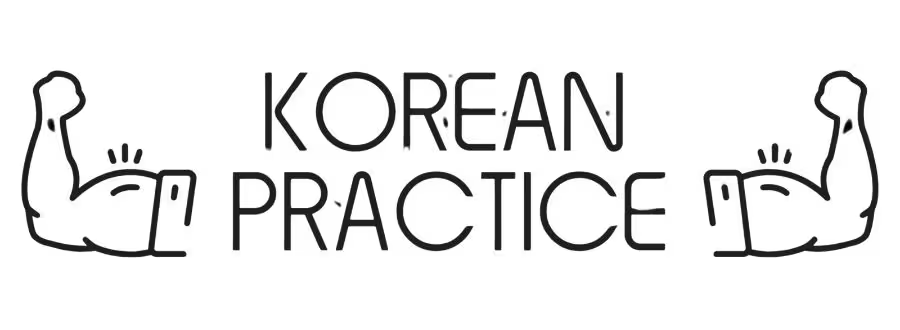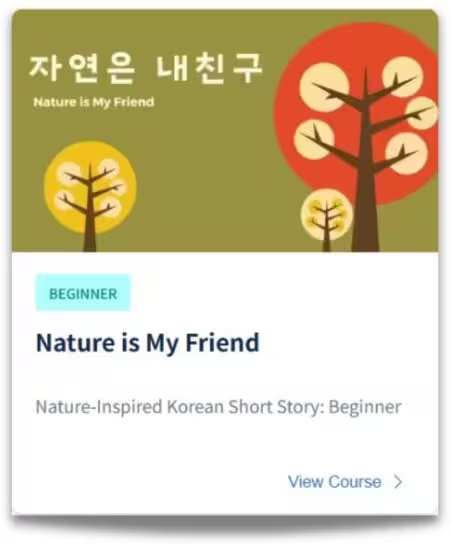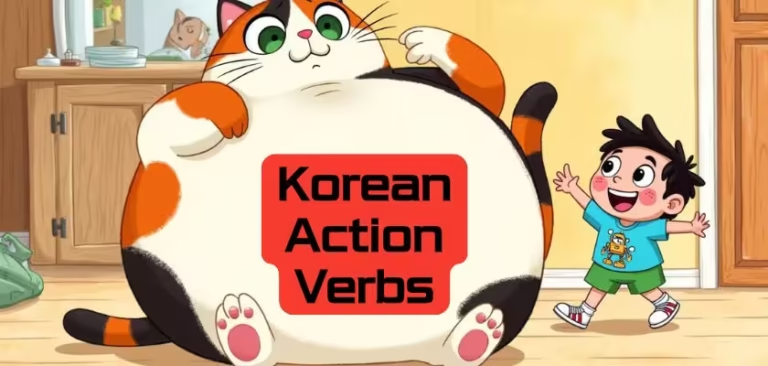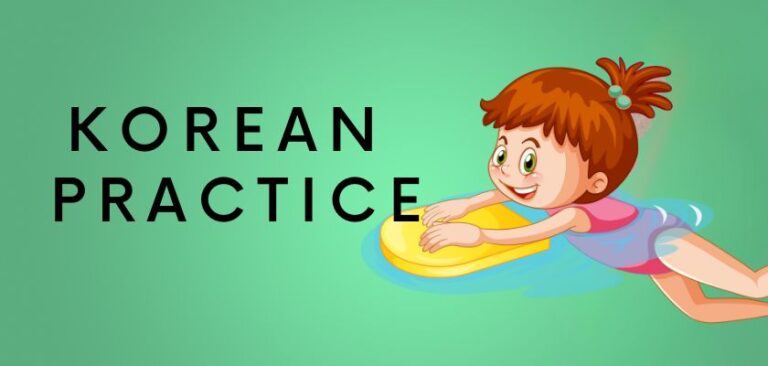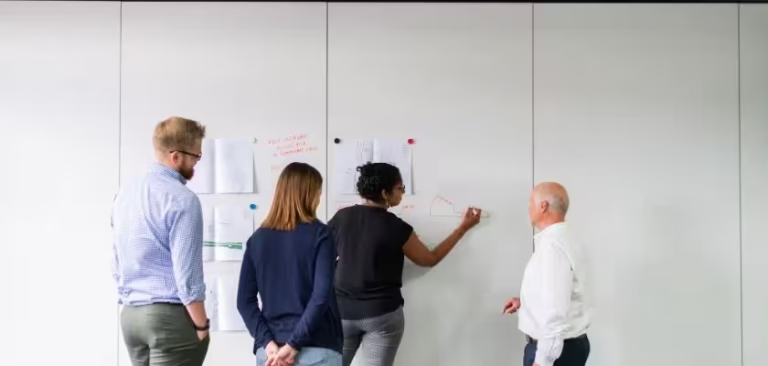Table of Contents
This post is for you if:
You’ve studied Korean grammar rules. You’ve memorized verb endings. But when it’s time to speak, your mind goes blank. Sound familiar?
Learning Korean grammar can feel like trying to solve a puzzle where the pieces keep changing shape. You might have invested countless hours studying conjugations and particles, yet still struggle to form natural-sounding sentences. The frustration is real—and you’re not alone.
This post is for you if:
- You feel like grammar explanations are too hard
- You forget everything after the lesson
- You still can’t form natural Korean sentences
- You wonder if Korean grammar is just inherently difficult
- You’re ready for a different approach to learning Korean
Let’s fix that—step by step.
Why You're Struggling
The Problem with Traditional Grammar Learning
When most people start learning Korean grammar, they’re immediately bombarded with technical terminology, charts full of conjugations, and abstract rules that seem disconnected from real communication. This approach might work for some, but for most learners, it creates significant obstacles:
Korean grammar is taught in abstract terms
Traditional textbooks and courses often present grammar points as isolated rules to memorize. You learn that “-았/었어요” indicates past tense, but without meaningful context, this knowledge remains theoretical rather than practical.
You're memorizing rules but not using them
Many learners can recite grammar rules perfectly but freeze when trying to use them in conversation. Why? Because memorization without application doesn’t create lasting neural pathways in your brain.
You don't see how grammar connects in real stories
Grammar doesn’t exist in isolation—it’s the framework that gives meaning to stories, conversations, and expressions. When you only learn rules without seeing how they function in authentic contexts, you miss the bigger picture of how Korean communication works.
You're overwhelmed by too many grammar points at once
Learning ten different grammar patterns in one lesson is a recipe for confusion. Your brain needs time to process and internalize each pattern before moving on to the next.
Real Example (Beginner Sentence Breakdown)
💡 Grammar without context = forgettable. But grammar in stories = memorable.
The truth about basic Korean grammar is that it’s not inherently more difficult than other languages—it’s just taught in ways that don’t align with how our brains naturally learn language. Korean has a logical structure that becomes clearer when presented through meaningful examples rather than abstract rules.
Let’s see how learning Korean grammar through a simple example makes concepts more concrete and memorable.

Example
Original Korean Sentence
사과가 떨어졌어요.
Pronunciation Guide
사과가 (sa-gwa-ga) 떠러졋써요 (tteo-reo-jyeot-sseo-yo).
Meaning and Context
사과 (apple) 가 (subject particle; indicates that apple is the subject of the sentence) 떨어지 (to fall) 었 (past tense) 어요 (I’m telling you polite and friendly)
Pronunciation Patterns for Conjugations
⊳ 지 + 었 = 졌. Rapidly pronouncing ‘지’ and ‘었’ results in ‘졌’.
Grammar
* 떨어지다 (to fall) + 었어요 (past tense ending) = 떨어졌어요 (fell)
English Translation
The apple fell.
Literal Translation
Apple fell.
Notice how different this feels from merely memorizing “past tense = -았/었어요.” Instead, you’re seeing grammar in action, serving a purpose in a real sentence. This is exactly how learning Korean grammar should work.
✅ You’re not just learning “past tense.” You’re seeing how grammar becomes meaning in a sentence.
Let’s try another example:
Example
Original Korean Sentence
저는 한국어를 배우고 있어요.
Pronunciation Guide
저는 (jeo-neun) 한구거를 (han-gu-geo-reul) 배우고 (bae-u-go) 잇써요 (it-sseo-yo).
Meaning and Context
저 (I; in a humble way) 는 (topic particle; indicates “I” is what we’re talking about) 한국어 (Korean language) 를 (object particle; shows Korean is what’s being learned) 배우 (to learn) 고 있 (~ing) 어요 (am; I’m telling you polite and friendly)
Grammar
* 배우다 (to learn) + 고 있어요 (progressive form) = 배우고 있어요 (am learning)
English Translation
I am learning Korean.
✅ These simple breakdowns make learning Korean grammar feel less like studying abstract linguistic concepts and more like discovering how to express real thoughts and ideas.
So What Can You Do?
If you’ve been struggling with learning Korean grammar, it’s time to change your approach. Here are practical steps you can take right now:
1. Don't study grammar by rules alone
Instead of starting with rules, start with simple sentences that demonstrate those rules in action. When you see grammar working in real expressions, your brain makes stronger connections and retention improves dramatically.
2. See grammar used in short stories with simple sentences
Stories provide context and emotional connection, which are powerful memory aids. Even simple stories can demonstrate multiple grammar patterns in natural ways. Look for materials that present grammar through narrative rather than isolated examples.
3. Practice grammar with reading + listening + sentence building
Multi-sensory learning reinforces neural pathways. Read sentences aloud, listen to native speakers using the grammar patterns, and then practice creating your own sentences following the same patterns. This three-step approach dramatically improves retention.
4. Focus on high-frequency grammar patterns first
Not all grammar is created equal. Some patterns appear in nearly every Korean conversation, while others are rare. Focus your energy on mastering the most common patterns before moving on to more specialized ones.
5. Practice in chunks, not isolated words
Instead of trying to build sentences from individual words, learn common phrases and sentence patterns as units. This mimics how children naturally acquire language and helps you speak more fluently.
6. Use visual associations
Connect grammar patterns with images or physical movements to create stronger memory associations. For example, you might use a backward hand motion when practicing past tense verbs.
7. Test yourself in real conversations
Grammar knowledge that stays in your notebook isn’t helping you communicate. Find language exchange partners or tutors who can give you immediate feedback on your grammar usage in conversation.
What You Need: A Story-Based Approach to Korean Grammar
Learning Korean grammar doesn’t have to feel like memorizing mathematical formulas. When grammar is presented through engaging stories and clear examples, it transforms from abstract rules into practical communication tools.
The Story-Based Method in Action
Imagine learning the past tense not through conjugation charts, but through a simple story about a child who lost their toy. As you follow the narrative, you naturally encounter multiple examples of past tense verbs in context:
- 인형을 잃어버렸어요. (I lost my doll.)
- 엄마가 도와주셨어요. (Mom helped me.)
- 결국 인형을 찾았어요. (Eventually, I found my doll.)
Through this short narrative, you’d encounter the past tense pattern multiple times in meaningful contexts—far more effective than memorizing “-았/었어요 = past tense” as an isolated fact.
Ready for a Better Way to Learn Korean Grammar?
That’s exactly what I teach in my Beginner Korean Story Course. It’s not grammar charts. It’s real Korean you can use—broken down step-by-step with examples like the ones we’ve discussed.
My approach to teaching Korean grammar is different:
- Simple stories that naturally incorporate grammar patterns
- Clear breakdowns that connect form to meaning
- Progressive building of grammar knowledge through narrative
- Focus on the most useful patterns first
- Practical exercises that reinforce learning
Learning Korean grammar doesn’t have to be a struggle. With the right approach, you’ll find that it has a beautiful logic that makes perfect sense—once you see it in action.
📌 Try a method that actually sticks. Your Korean grammar journey doesn’t have to be hard.
Conclusion
If Korean grammar still feels confusing, it’s not your fault. You just need a better way to learn—with stories, not rules.
The traditional approach to learning Korean grammar often sets learners up for frustration rather than success. By shifting to a story-based, context-rich method, you’ll find that what once seemed impossibly complex becomes clear and even intuitive.
Is Korean grammar hard? It certainly can be when taught poorly. But with the right methodology, you’ll discover that it has a consistent, logical structure that you can master step by step.
Sign up for my newsletter and get
📖 Korean short stories
🎧 Listening practice with audio
❓ Vocabulary and grammar quizzes
🎁 Free courses
📝 Blog updates
– all delivered straight to your inbox!

